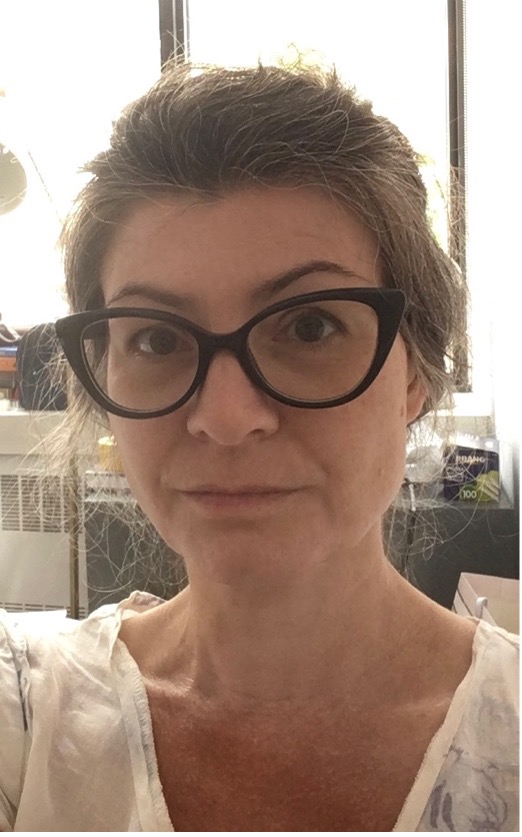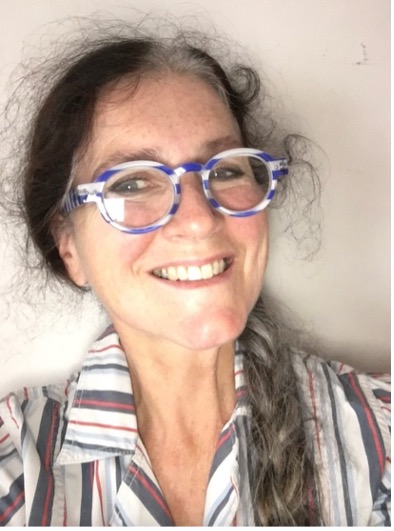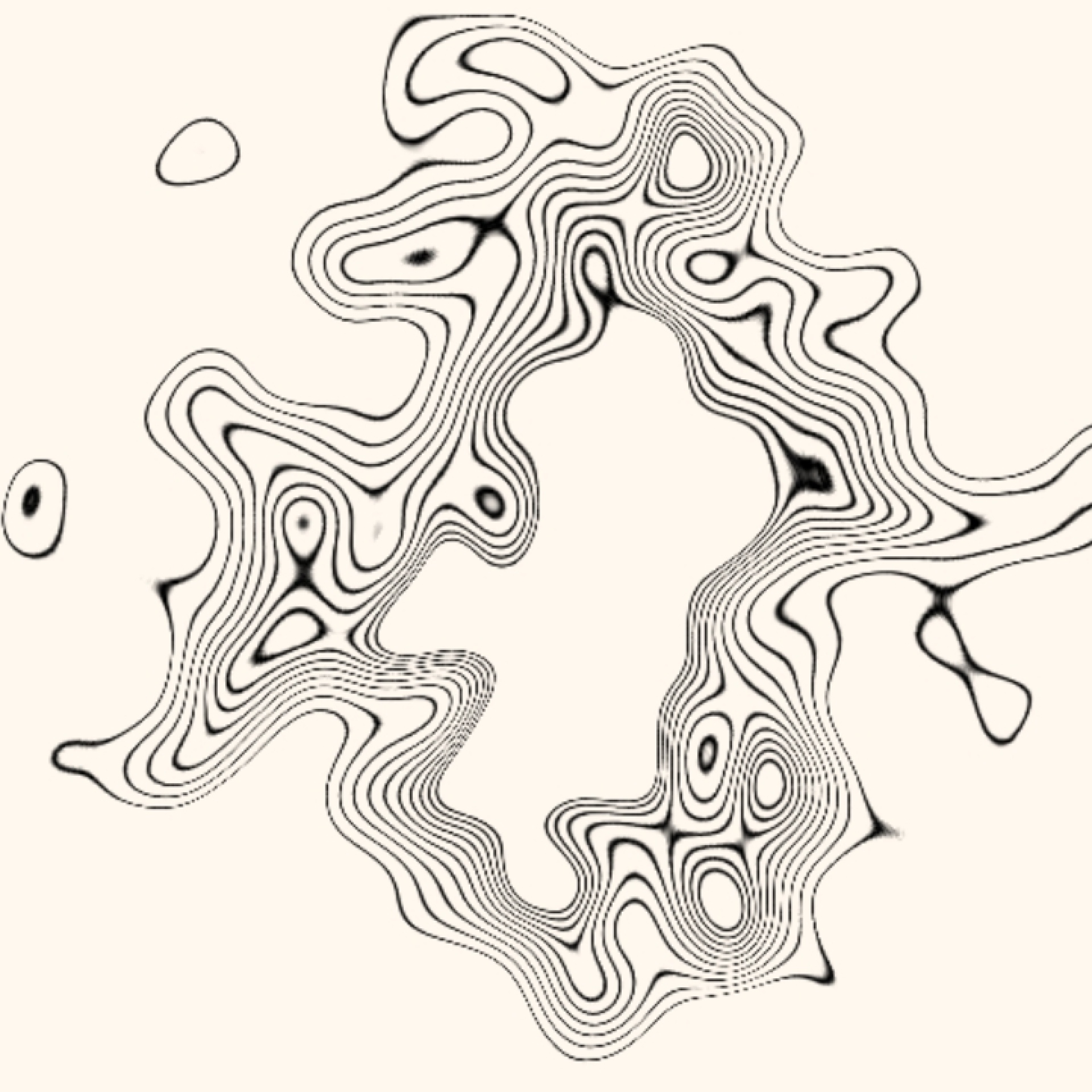SPILL—a collection of outstanding student work produced in the Faculty of Arts and Science classes in the 2022/23 academic year—is a diverse collection of responses to lived realities that extend and feel outwards and beyond. In the Fall of 2022, OCAD University students and faculty returned en masse to in-person learning. As the halls and classrooms filled up again, people responded with joy, relief and anxiety. Very quickly, we realized that we still had a lot of work to do to assess what we’ve been through in the past few years and to understand the lasting effects of being together, while apart, to contain the spread of the virus. Throughout the COVID pandemic, we’ve all learned a great deal about physical and mental health, economic disparity and the social problems it produces and exacerbates, and the unprecedented climate crisis we are currently navigating. While working on SPILL, for example, fires raged in Canada and continue to rage around the world. Questions of land dispossession, climate change, and corporeal displacement continue to matter for the artists, designers and thinkers featured in this issue. The work collected in SPILL reflects this time of community rebuilding, deep introspection and critical (re)assessment of our contemporary situation, with efforts towards living the edges of bodies and spaces.
As editors, we’ve been impressed with the quality of student writing, but also the diversity of style and perspective represented in this collection of works that fall under two thematic categories. The first seven texts focus on the local: specifically, the tensions experienced in the general vicinity of the city of Tkaronto / Toronto. There are stories here of human and non-human lives existing side-by-side, sometimes in discernible conflict and sometimes in a delicately balanced symbiosis; together, we weather the negative effects of gentrification and climate change. Another group of texts included here explore the medicalization of bodies and other forms of corporeal displacement, ultimately affirming and sometimes celebrating our embodied difference. Taken together, this student work serves as a record as much as a reaching, and perhaps even a guide to the collective process we have undertaken: to understand our post-pandemic world and to work towards creating a better one.
Carly Cantlon (she/her) develops their narrative about Toronto’s Parkdale community alongside three visual maps where we learn not only the history of Parkdale and the changes to its housing situation. The three narratives offer insights about changes to infrastructure and invites women to consider affordability, safety, childcare etc. The different annotated maps provide a range of entry points to Cantlon’s concerns of overcoming a Eurocentric, male-dominated urban city planning politics. Cantlon unpacks some of the city’s complexity and in this layered strategy one sees the relationships unfold between suburban development and public transport, and privatization of land and influx of highrises and condos.
FEAST tells a story of life from the underground, at the margins, and in the thick of things. This is a life lived between twinned cities, one above, one below. Richie Evans presents the life cycle of the skin beetle through episodic memory and evocative descriptions of the materiality of insect existence. The larval beast, part of a rich kinship community that spans 17,000 years, eats its way through rich fragrant earth, then hatches into a beetle feasting upon concrete, mass produced furnishings and floorboards. Disdainful of artificial borders imposed by human agents, the beetle enters and exits domestic spaces and urban infrastructure with ease. Impervious to poisons and “human logics” that impose limitations on what is to be considered food, the beetles burrow, eat, and then return to the earth to die, completing and feeding the cycle of life.
In “Urban Hostilities”, Anna Chen walks the city of Toronto observing the human centric fixation of building upwards, and the non-human critters that are forced to adapt to a concrete life. She weaves her ordinary wanderings of city life with a curious wonderment for critter survival as she watches squirrels, pigeons, and sparrows, making homes and gathering scraps of “food” while evading the enormity and arrogance of human presence. Through ethnographic observation, Chen demonstrates that these adaptive creatures deserve to be seen, despite human disregard for their survival. Redirecting our gaze from the buildings humans build and the concrete that occupy the spaces of urban animals, Chen brings us closer to the ground and unfurls how these small creatures, ingeniously navigate taken for granted corners, ledges, sidewalks, and paths that humans traverse every day.
James Lee’s “Gentrifying the Public Realm: Contesting Narratives Within Representations of Street Vendor Culture in Toronto” presents a street-eye view of shipping container markets in Toronto. Lee considers the relationship between gentrification and fetishization while providing a first-hand account of two substantially different vendor markets in Toronto. The tension between the two markets and the publics space that surrounds them is deftly analyzed by Lee, who provides us with an important insight into the intersections between food, culture, authenticity, and capital in Canada’s largest city.
Using generative art and augmented reality to support sustainable adaptive coffee bean farming techniques, Valeria Suing (she/her) produces a compelling visual journal with real-time data input as an effective way to promote climate action. Suing demonstrates the severe impact of climate change on coffee bean farming, and they employ data generated shapes that relate directly to rising temperature and the effects this has on the quality, quantity and shape of the green coffee bean. They suggest that a connection of nature, body and technology promotes climate action through immersive experiential learning. Static and animated visuals produced are intriguingly related to and suggestive of the oily black coffee we all appreciate so much. The playful approach to keeping to a coffee table book format yet animating its imagery with real data input opens up a timely urgency with an inspiring clarity.
Ella Taylor asks what it would mean to mourn the absence of a native species: the Atlantic Salmon of the Wonscotonch (Don) River. Drawing on the work of indigenous scholars Zoe Todd and Leanne Betasamoke Simpson, Taylor proposes a practice of embodied listening as a way to challenge the division between human and non-human animals within EuroAmerican culture. This division marginalizes forms of life that do not communicate via formal languages, based on the assumption that language denotes reason, including moral responsibility and cognitive capacity. Whereas European philosophy is driven by the notion that the senses are mere reaction to external stimuli, Taylor suggests that embodied listening enacts a respect for the life (and death) of the other that makes it possible for us to mourn their passing.
Anna Teolis’s beautifully illustrated visual review of Oji-Cree writer Joshua Whitehead’s collection Making Love With the Land introduces us to the concept of “the end” as it appears in multiple essays in Whitehead’s book. Teolis proposes that the book as a whole is an attempt to come to terms with the dystopian present of Indigenous life within the presence of destructive Canadian colonialism, an attempt to understand how a community continues to live within the end. Whitehead, Teolis informs us, refuses settler time and colonial concepts of linearity and finality; “the end” may be a death, but even death is not absolute; it is, rather, transitory. “The end” is not a resolution, but something like a landmark pointing to new possibilities, to a new beginning for queer and Indigenous communities.
In “‘I am a doctor, dear, and I know’: The Medical Gaslighting of the Bio-Other in ‘The Yellow Wallpaper,” Vanessa Sanginiti makes a nuanced and historically-informed argument about S. Weir Mitchell’s notorious rest cure and the medicalization of female subjectivity in Charlotte Perkins Gilman’s best-known story. Sanginiti seamlessly weaves a historical account of treatments for “hysteria” with a close reading of the text and contemporary theories of gender, sexuality, and medical gaslighting in this clever and creative reading of one of American literature’s most memorable ghost tales.
Tori Conway’s comic “My Number 7 Is a Velociraptor: The Struggle of Living With an Invisible Illness” is a moving, illustrated account of the author’s struggles with endometriosis and the gaslighting that is endemic in a medical system that fails to acknowledge and believe patients’ own account of their pain and their bodies.
Espie Kremenstova starts with their body, and a poem rendered as a hand-knit vest, featuring two stanzas. The words worn on their body- a wearable affirmation of multiplicity- is a political project that makes a claim for disability, refusing medicalized subjectivity, and the perspective that a body can be narrowly defined. Kremenstova proposes a tactile language through knitting and textile art. In this instance the words and the feel of the words are accessible. They admit that seeing and uttering the word “incurable” woven in material on their body, is both difficult and soothing. Kremenstova carries the weight of the words, and the labour of creating affects that make disability art.
Guadalupe Koen-Alonso tempts us with a Bartlett pear, and while this is a randomly chosen fruit, it is the “perfect” placeholder and starting point for their intriguing demonstration of othering bodies. Guadalupe Koen-Alonso moves swiftly between body shape and norm and our complicity with the concept of beauty, that holds onto an ideal that is mathematical and random considering oppressive and colonial measuring and data collection techniques. They use a sharp knife to sculpt five additional fleshy fruits into a normed Bartlett pear. Messy and brutal they present us with an absurd result, on a stained sheet a mutilated undesirable Bartlett pear-shape stares back at us.
Jiayue Pan essay, “Puppy Play” points to queer male communities and the role of human-pet relations in kink practices. Important to her analysis is the role and negotiation of power when comparing puppy play and dog-slave master play. While both incorporate the desire for non-human embodiment- or the anthropocentric perception of non-human embodiment, these practices are deeply rooted in affirming human cultures and values pertaining to for example, clothing and gender roles. Pan holds an interesting tension between desires of wanting to become animal, while staying within the realm of human preoccupations of self-presentation. She explores what non-human embodiments mean in relation to power, service, domination, and submission, while questioning how repressed human animality can play out in the context of kink.
Editorial Committee for The Arts & Science Review

Ross Bullen
Ross Bullen teaches classes in American literature, writing, children’s literature, and science fiction at OCAD University. Since 2015, he has been the course coordinator for “The Essay and the Argument,” OCAD U's first-year English and writing class. He has essays published or forthcoming in American Literature, the Canadian Review of American Studies, English Studies in Canada, the Journal of American Studies, and The Public Domain Review. He also regularly contributes short humour pieces to McSweeney's Internet Tendency.

Kathy Kiloh
Kathy Kiloh is an Associate Professor in the Faculty of Liberal Arts and Science at OCAD University, where she teaches humanities classes like “Uncanny Animals,” “Philosophy of Love and Sex” and “Modernities: Critical Perspectives.” Her research centres on Critical Theory, psychoanalytical theory, aesthetics, politics and ethics. She is currently writing a book about love as a key concept in T.W. Adorno’s philosophy.

Maria Belén Ordóñez
Maria Belén Ordóñez is Assistant Professor (Teaching Stream) in the Faculty of Arts and Science, Social Sciences at OCAD University. Her research and teaching stem from cultural anthropology, multi-sited and experimental ethnography, critical theory, and body politics. Her current research focusses on queering ideas of the maternal in legal and cinematic terrains.

Barbara Rauch
Barbara Rauch joined OCAD University in 2009. She is an Associate Professor at the Faculty of Arts and Science, Faculty of Art cross-appointed, and the Graduate School. Barbara is also a co-director of the Data Materialization Studio Lab, where they research advanced technologies in 3D printing/sculpting and data analysis. In the lab they designate an alternative format of acknowledging research by instigating discourse around the topics of affect, emotion and feeling in art, craft and design practices. Currently Barbara holds a Canada Council grant working with digital archives (together with M. Gay). A recent SEED grant about “models as sustainable practices and speculative critical posthumanist theories” investigated models becoming a way of pointing to futures including posthuman, feminist, decolonial, and ethical futures. She presented two papers at Arts in Society in the summer of 2023.
